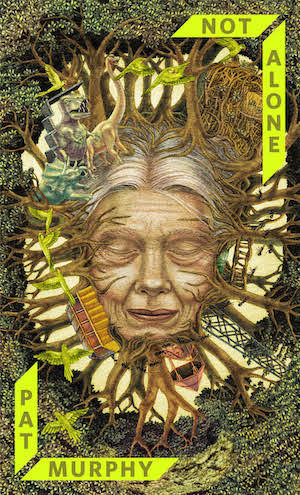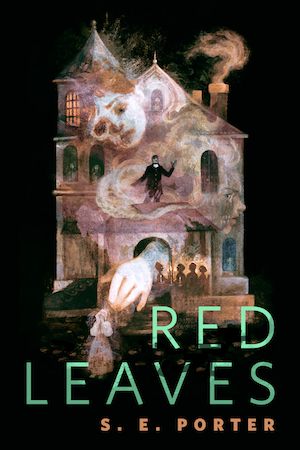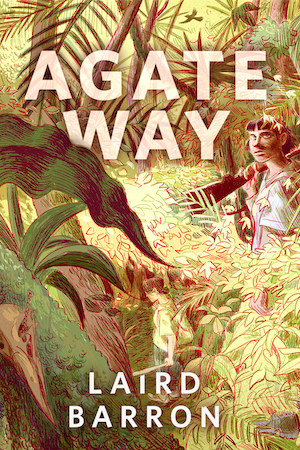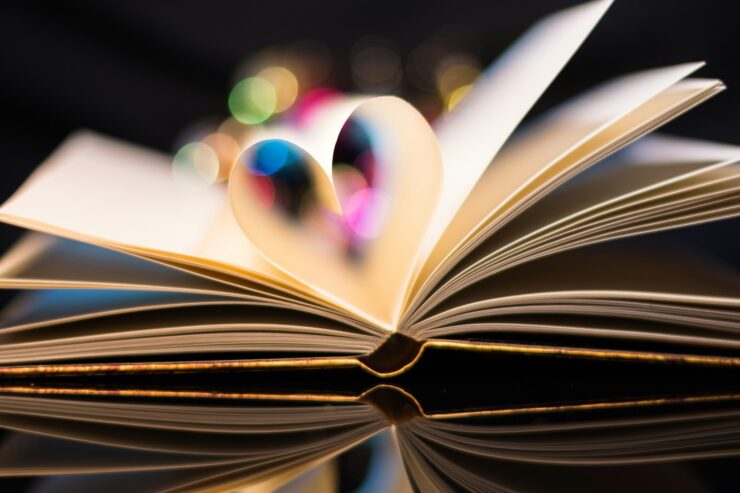Like so many fabulous winged creatures, romantasy books continue to fly off the shelves. It’s undeniable that romantasy is quickly becoming a major subgenre. But my question is… how exactly are we defining Romantasy?
I think it might be useful to establish the parameters of the subgenre, and discuss a few favorite examples of romantasy books to see what aspects have made them so attractive to readers. So, let’s jump right into things…
Romantasy is, of course, a relatively new portmanteau for a subgenre that combines both fantasy—a story with fantastical elements—and romance—a story with a central love story featuring a romantic group that ends in a happily ever after or happy for now (HEA/HFN).
The question readers new to the concept often ask is if romantasy is simply a new term for either romantic fantasy—a fantasy book with romance elements—or fantasy romance—a romance story taking place in a fantasy setting. Right now, a book marketed as romantasy could technically fit into either subgenre category. After some deliberation, I’d argue that romantasy books should have a central romance with an HEA/HFN, not just a romance subplot. In short, romantasy should be more fantasy romance than romantic fantasy.
And of course, I’m hardly the only one making the case that a central love story is a crucial feature of romantasy books—for more on that, check out this piece for The Washington Post from earlier this year by Sarah Wendell, longtime book blogger, author, and podcaster. Part of my rationale comes from the implicit social contract between romance readers and romance writers. There is a promise baked into the premise that no matter what happens in the middle of a book, the characters in the romance will find their way to each other in the end. It is not a spoiler to know a romantic couple or grouping will end up together, it’s a genre requirement. How an author gets to the HEA/HFN is where an author’s skill and ingenuity comes into play. If romantasy is a genre marketed largely to romance readers, it must follow the same social contract or readers will feel hoodwinked.
Speaking of marketing, I know the current excitement over romantasy can seem a little overhyped, as it’s started to appear everywhere you look, but personally, I believe the overzealousness and buzz is coming from a sincere place. People in charge of book marketing are trying to get fantasy books in front of the most faces as possible, and the way to do that right now is by marketing everything with any amount of romance as romantasy. Also, we cannot discount the fact that for a long time, it was very difficult for fantasy books with romance subplots to get book deals at all. It was even more difficult when those authors were not white, straight, cisgender, and or men.
Trust me when I say I get it. I loved fantasy before I loved romance and I grew to love them both so much I got a master’s degree in the intersection of fantasy, romance, and neomedievalism. I very much want there to be more books that prioritize friendship, romance, and intersocial relationships in fantasy books. There is plenty of space for fantasy romance, romantic fantasy, and romantasy to be published, marketed, and delivered into the hands of eager fantasy readers.
However, when non-HEA/HFN romantasy is promoted to romance readers, it results in them feeling disappointed when they finish it, since they went in expecting a central, happily-ever-after romance, and that’s not what they got. This is not because it’s a bad book, mind you—the problem is that the romance reader’s expectations (based on the marketing of the book) aren’t going to be met if the romance isn’t central to the plot.
Although romantasy is a relatively new label—after all, the term only gained traction with book blogs, readers, and publishers in about 2022—the popularity of romances in fantastical settings is nowhere near new. As a medievalist, the northern French medieval poems known as Breton lais are my go-to, prime examples of popular twelfth- to thirteenth-century entertainment that often centered a romance and the fantastical.
Let’s take Marie de France’s Lanval as an example (famously written in the local language over Latin because it was primarily public entertainment). In the poem, Lanval is an honorable foreign knight in King Arthur’s court who hasn’t been getting his pay from the king, and so, he is unable to pay his retinue. When two ladies in the forest ask him to meet their mistress, he follows them and meets an absurdly wealthy and beautiful fairy lady in the woods who promises to love him and fund his people if he doesn’t reveal her identity to others. To make a long poem a bit shorter, he reveals her existence to the court when Guinevere falsely accuses him of making unwanted advances and shaming her. The fairy lady shows up at Lanval’s trial anyway, whisking him away to the fairy realm, Avalon.
It is one of my favorite examples of just how long we have loved stories in which romance and the fantastical work hand in hand in popular literature. Stories that combine romance and fantasy can push people to reconsider what they want from life when they look at something wildly out of reach. We don’t expect a fairy woman to show up, bankroll us, and solve all our problems, but maybe we would feel better if it felt like we were being properly compensated and recognized for our work. Plus, it’s satisfying to see the failure of an intersocial relationship (that between Lanval and his king) fixed by a new successful intersocial relationship with the fairy lady. Given this history, I am not surprised that in the early modern period, Shakespeare was thinking about negotiating romantic relationships and the fantastic in his comedic play A Midsummer Night’s Dream.
I am almost certain that there are a host of fantasy romance-style works of popular fiction written before the late 1980s, when fantasy romance books like Emma Bull’s War for the Oaks, featuring rock band singers and a fairy war, were published, even if they might be hard to track down today. After all, one of the biggest problems with genre history continues to be documentation and availability of extant copies of books, many of which were printed cheaply and treated as relatively disposable.
In more recent years, authors like Nalini Singh, Sarah Beth Durst, Elizabeth Vaughan, and Jennifer L. Armentrout have been publishing in the fantasy romance or romantasy space. Queer authors like Jane Fletcher and Merry Shannon have also been publishing lesbian romantasy books since the early 2000s—queer stories have always been a part of the subgenre.
While there’s a long history preceding the current explosion of interest, I noticed a real shift in the widespread success of romantasy beginning when Sara J. Mass’ A Court of Thorns and Roses books—already preforming well as young adult fantasy romance—were rebranded for adult fantasy readers in 2020. Subsequently, Red Tower Books’ runaway romantasy success, Fourth Wing by Rebecca Yarros, was published in 2023. The popularity of both series was also undoubtedly fueled by the spike in readership that occurred during the pandemic.
Today the subgenre is generating enough revenue that two publishers have imprints dedicated to publishing romantasy books. Tor Publishing Group launched Bramble, an imprint dedicated to publishing romance across a number of different genres (including, of course, science fiction and fantasy), and the independent Entangled Publishing launched the aforementioned Red Tower Books, a new adult fantasy imprint. Even publishers without specific romantasy imprints like Hachette Book Group’s Orbit, and HarperCollins Publishers’ Harper Voyager both have acquired romantasy series for their publishing catalogues. Another indicator of romantasy’s success was the inclusion of a romantasy category in the Best Books of 2023 Goodreads choice awards.
I think it is fair to say that readers, and therefore publishers, are set on romantasy being here to stay, as long as it continues living up to their desires and expectations. And, after making my way through a lengthy self-assigned reading list, I do have a few recommendations that highlight different features of romantasy:
A River of Golden Bones by A.K. Mulford is a gorgeous, nonbinary-led wolf shifter romantasy reimagining of “Sleeping Beauty.” Although they are twins, Briar was a princess raised to marry Prince Grae and Calla was a soldier raised to lead their armies…even though Briar doesn’t love Grae and Calla does. When an evil sorceress abducts Briar at her wedding to Grae, Calla goes against royal orders and she/they run away from the prince she loves to save their sister. Mulford has quickly become an expert at crafting romantasy, managing to balance fantasy worldbuilding and compelling, satisfying HEA/HFN romances.
If you are looking for more series-long romantasy epics, book one of Nisha J. Tuli’s Artefacts of Ouranos series, Trial of the Sun Queen, is a good place to start. Lor and her siblings were whisked away from their home and sentenced to live in the Aurora King’s deadliest prison work camp. They unexpectedly survived for twelve years. So, when Lor is taken from the prison, she is desperate to never return, as long as she can get her siblings out too. Although Lor doesn’t quite understand why Sun King saved her and entered her into a deadly competition for his hand, she is willing to do anything to secure her family’s freedom. Deadly stakes and uncertain allegiances are hallmarks of the series, and—not to spoil anything—the romance spans all three books.
One of the best romantasy duologies out there right now begins with the wonderfully queer A Strange and Stubborn Endurance by Foz Meadows. Velasin’s diplomatic marriage contract with a woman from a neighboring kingdom is transferred to the woman’s brother, Caethari, when the envoy witnesses a confrontation that outs Vel to his homophobic family. With the knowledge that he cannot return home, Vel is forced to travel to meet his new husband in the queernorm country he’s always dreamed of living in. Cae is kind, and everything Vel has ever wanted in a partner, but Vel is still overcoming the trauma from his last relationship, adjusting to new cultural values, and trying to avoid dying from the multiple assassination attempts that threaten his life. The romantasy duology explores what it means to start living an openly queer life and what it costs to attempt to overcome internalized homophobia and bigotry all, in a politically complex high fantasy world.
Shifting tone, That Time I Got Drunk and Saved a Demon by Kimberly Lemming is a joy-filled romp of a romantasy that lives up to its anime-inspired title. Cinnamon is a simple cinnamon farmer who does not want to go on a grand adventure…that is, until she accidentally frees a demon from a violent spell while walking home drunk. Now Fallon—the demon, who has the ability to shift into a dragon—wants her help infreeing demons across the land and defeating the evil witch posing as a goddess. He’s also busy trying to convince Cinn to marry him every chance he gets on their journey. Lemming’s romantasy trilogy is a good time with a fun plot, well-developed worldbuilding, and a set of three romantic relationships you’ll want to root for.
There are also a couple of queer romantasy trilogies, all set in alternate versions of Edwardian England, that I really think should be considered as falling under the romantasy umbrella. The Kingston Cycle by C. L. Polk is a trilogy that follows three couples uncovering a government conspiracy behind the magic powering their world in a queernorm, witch-filled London. The first book is Achillean, the second book is Sapphic, and the third book features a relationship between a woman and her genderqueer spouse.
My second recommendation in this oddly specific romantasy subcategory would be The Last Binding trilogy by Freya Marske. The series follows three different couples who are working to find and protect three powerful magical items power from a sinister group that’s conspiring to steal and control witches’ magic. Books one and three are Achillean and set in England, and book two is Sapphic and set on an Edwardian ocean liner. Personally, I am all for romantasy books, like these two series, that prove that the power of queer love and found family can overcome magical bigotry.
Subgenres and their boundaries and parameters will always be subject to change and debate, particularly ones as undefined and amorphous as romantasy. The essay above is simply my own personal attempt to come up with a working definition of the term, based on my understanding of genre history and reader reception. From my perspective as a reader and fan, romantasy gives me everything I could possibly want, providing a highly enjoyable reading experience filled with compelling worldbuilding and satisfying genre romances. However we ultimately define romantasy, I hope many more books like these get published, and continue finding their way into the eager hands of readers looking to fall in love, over and over again.










